Pixel Puzzle Makeout League is a superhero-themed visual novel punctuated by nonogram “pixel puzzles.” The story focuses on superhero-in-training Pixel Girl who has just moved to a new city and joined the Puzzle League, a costumed supergroup with puzzle- and problem-solving powers. Shortly after rescuing their newest recruit from the despicable Villain, an endless tower materializes in the middle of the city. It’s up to the Puzzle League to solve the mystery of the tower and the threat it presents to the city all while making time on the side to pursue romantic interest in their newest teammate.
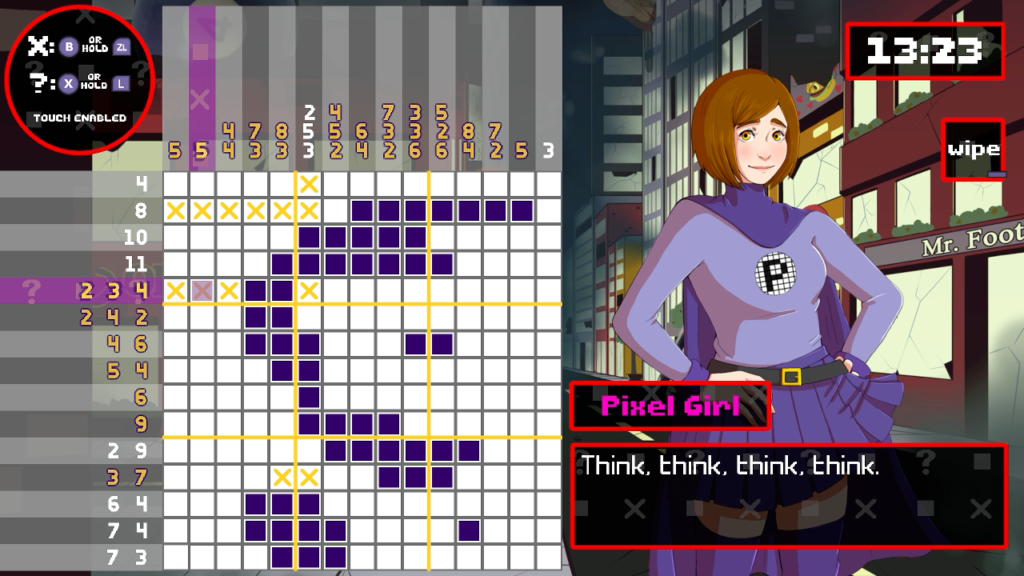
Pixel Girl’s superpower is to envision objects and ideas as nonogram “pixel puzzles” and subsequently solve them. This ability drives Pixel Puzzle Makeout League’s central conceit. As I progress through the narratively-driven adventure, Pixel Girl encounters nonogram puzzles which I must solve before I am allowed to continue in the plot.
A nonogram puzzle hides a picture in a grid. By applying deductive reasoning to number clues along the grid’s edges I can determine which coordinates—pixels—should be filled in and which should be left blank. The number clues show how many pixels in a row should be filled in. If the row is ten pixels wide and its number clue is ten, then I should fill in all ten pixels; if its number clue is five and four, then I should fill in five pixels, leave one blank, then fill in the remaining four, for a total of ten pixels. Most number clues won’t reveal the entire row in this way so I must return to them later when I have solved perpendicular clues that give me more information. When I solve all the number clues correctly then the puzzle is solved and a picture is revealed.
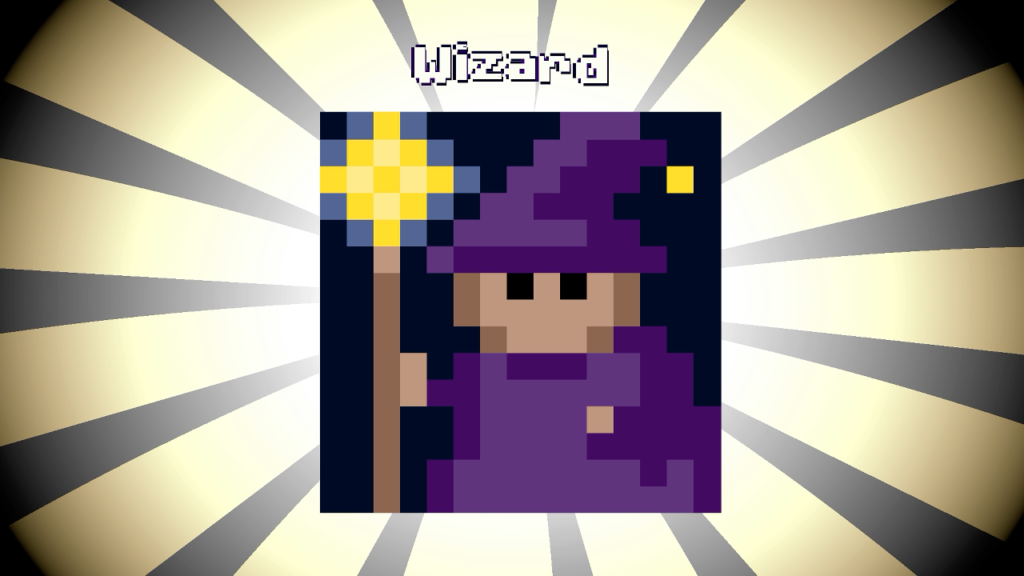
Pixel Puzzle Makeout League’s nonogram puzzles never rise above a novice difficulty level. Its largest grids are fifteen by fifteen pixels, still in the “easy” category in any other nonogram collection. Even with a time limit on every puzzle and penalties towards my remaining time when I make a mistake, I was never challenged and it was only sheer enjoyment of nonogram puzzle solving that kept me engaged. I worry that experienced players might be bored by what’s on offer here, but if a novitiate were to express trepidation at nonogram difficulty I would immediately point them here. With gentle puzzle difficulty and long breaks as the next scene plays out, it’s as-close-to-perfect a videogame for nonogram beginners I’ve played.
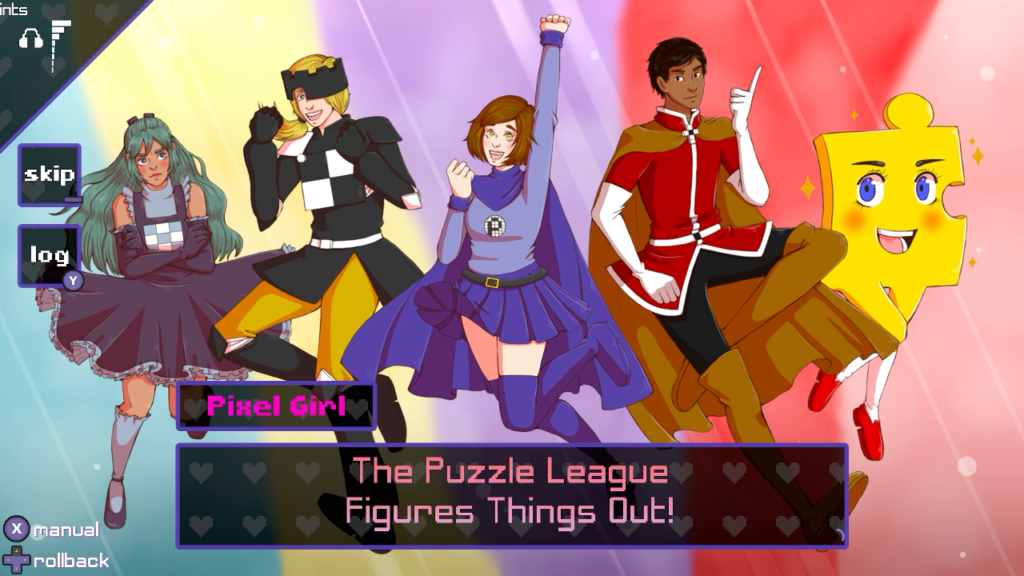
Pixel Girl encounters these nonogram puzzles while out on adventures with other members of the Puzzle League. Chess, the team’s leader, is a strategist with the bravado of Adam West’s Batman but with an alienating enthusiasm to match. Crossword is a wellspring of obscure facts but struggles with tact and context. Sudoku is a master of logic and patterns but finds it difficult to share her feelings. Piecea is a sentient human-sized puzzle piece, a refugee from an alien world, and has Squirrel Girl-esque powers of inexplicability. I can direct Pixel Girl to pair up with any of these four, and each subsequent investigation into the nature of the tower that has appeared in the city doubles as a date between the two.
Where Pixel Puzzle Makeout League stumbles hardest is how it falls on Pixel Girl to do all the emotional labor in each pairing. Each follows a repeated plot: Pixel Girl tags along on an investigation and witnesses her partner in a moment of emotional weakness. She supports them, they appreciate it, and the partnership develops into romance. But there’s never any reciprocity. Part of this is a problem of the videogame medium; as a player character, it falls on Pixel Girl to be the most reactive participant in the story. As she encounters her own emotional hardships, the support she receives is always from the team as a whole and never from her romantic partner in particular. Pixel Girl comes across less as an equal in a partnership than an emotional workhorse brought along to improve the lives of everyone in the Puzzle League but herself.
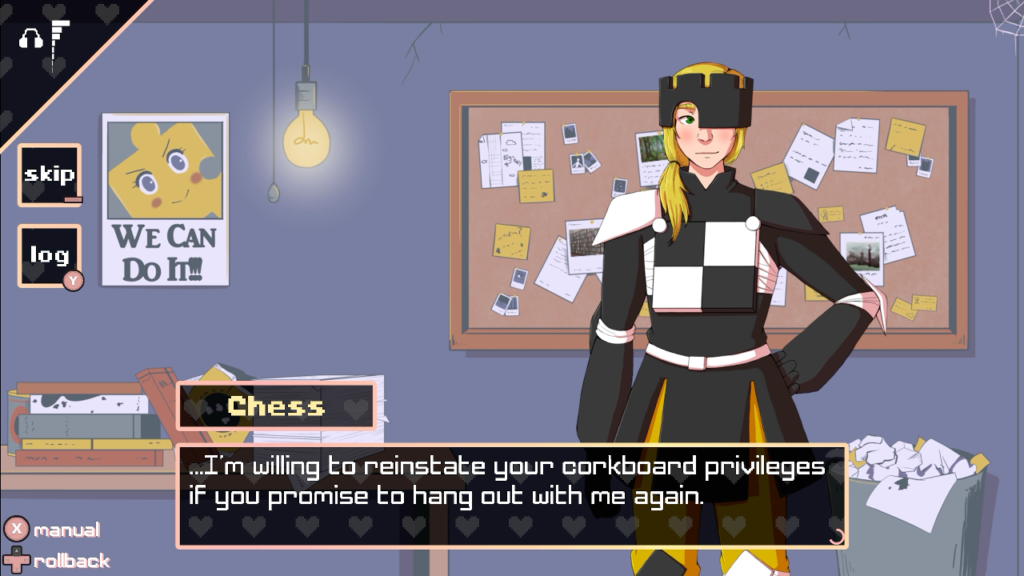
None of this is helped by how the Puzzle League members are unappealing as romantic partners in general. Chess publicly claims credit for one of Pixel Girl’s plans, and though I was able to call him out on it, Pixel Girl forgave him with far more alacrity than I. This felt especially galling given how often women’s contributions to teams are ignored or credited to men. Crossword unloads upsetting kidnapping facts on Pixel Girl moments after she has been rescued from a kidnapping, and as this is literally her first one-on-one interaction with him it doesn’t set him up in the best light.
Piecea comes off the worst, using her strange powers to launch Pixel Girl into flying, boating, and spelunking adventures without warning or permission. Pixel Girl essentially surrenders her agency during dates with Piecea and seems charmed by all the strangeness. I did not feel the same way. Where I found Chess and Crossword too immature to be appealing romantic partners, I found Piecea’s behavior actively repellent, as though I was expected to find a literal cartoon character a realistic romantic prospect.
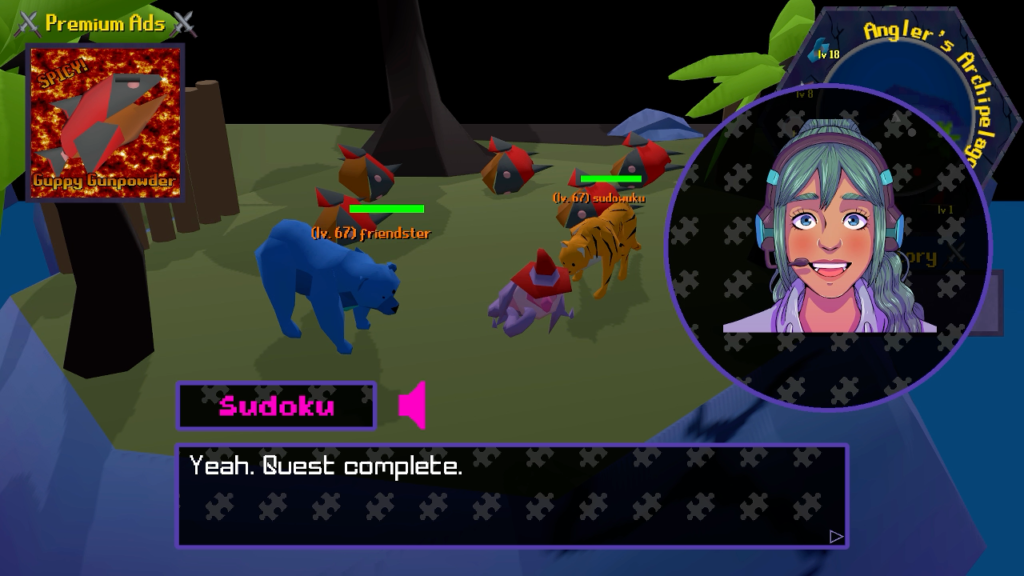
Ultimately I gravitated most towards Sudoku as Pixel Girl’s romantic partner. I not only identified with her difficulty sharing her emotions with people she feels close to, but also her tendency to slack off during missions by retreating to her apartment to play Sweetheart Safari Online, an MMORPG. Pixel Girl almost feels like the unappealing part of the pair as she inserts herself in Sudoku’s life and refuses to leave until Sudoku learns to appreciate her presence. Despite this, their relationship felt the most genuine of the four choices.
Pixel Puzzle Makeout League is not a complex dating sim. It may not even count as a “sim” at all as there is little simulation happening behind the scenes. There are few choices to make in conversation with Pixel Girl’s potential partners, and when they do appear I cannot choose poorly and lower that partner’s disposition. Instead they keep presenting choices until I pick what they want to hear—another example of how the Puzzle League patronizes Pixel Girl.
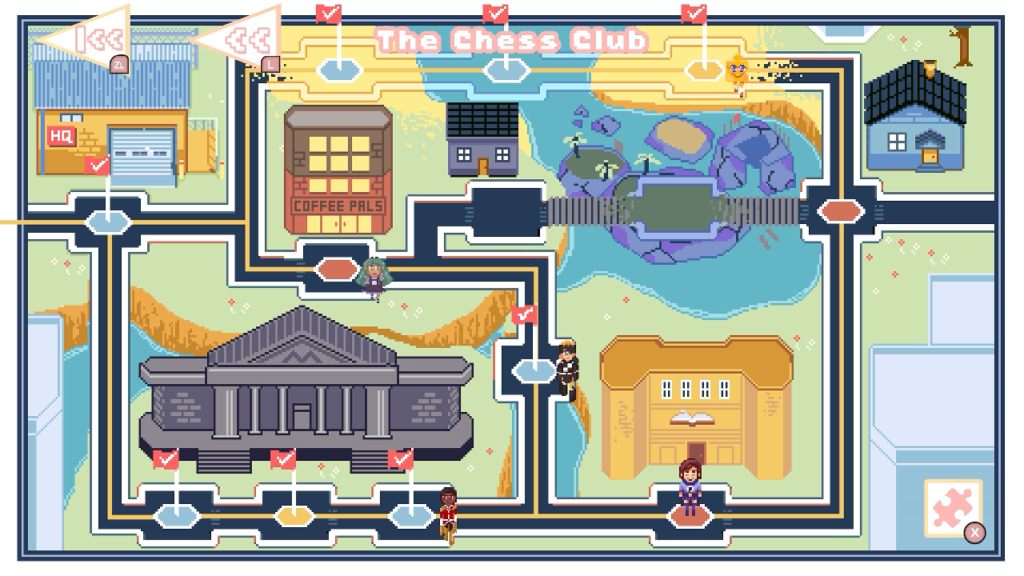
Instead of branching paths determined by what choices I make on each date, Pixel Puzzle Makeout League operates episodically. Each Puzzle League member appears on a map of the city, following a clear route from the screen’s left side to its right. By visiting each partner’s square, reading all the dialog, and solving all the nonogram puzzles that appear, I complete their episodes for that chapter and their path opens in the next. If I follow a partner’s path across all maps then I complete their unique story with Pixel Girl.
The result is Pixel Puzzle Makeout League is less a dating sim than it is a visual novel. I don’t have to think too hard to see any particular ending, I just have to keep picking that character from the world map until the relationship blooms and Pixel Girl is declared their girlfriend.
At this point I feel somewhat negatively towards Pixel Puzzle Makeout League. I enjoy the nonogram puzzles, but find them too easy, while I am troubled by the relationship dynamics and bored by the rudimentary narrative design employed to communicate them.
Then I unlock the secret final chapter.
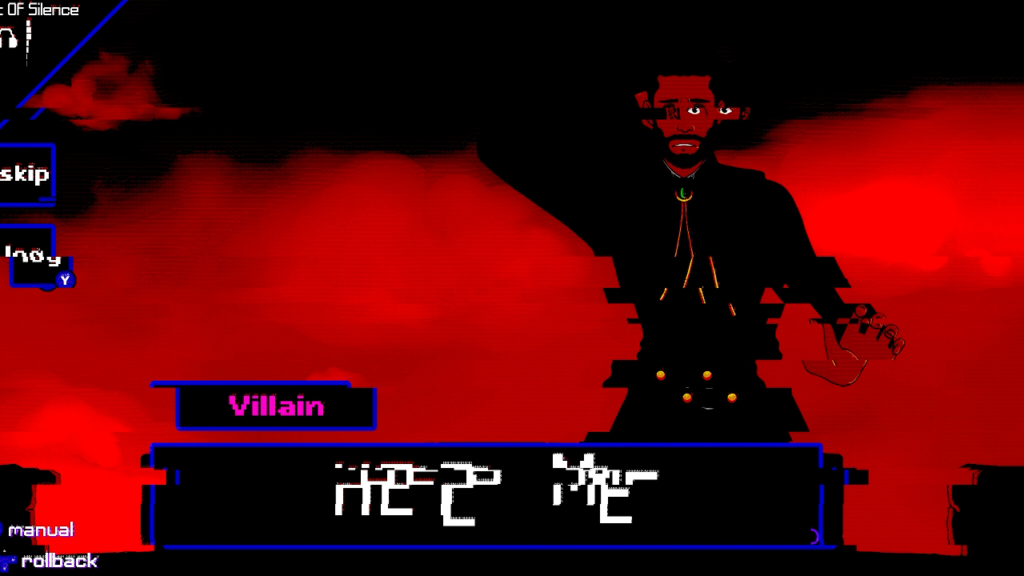
The episodic dating format vanishes as betrayals happen then un-happen. The one meaningful choice I make is validated then nullified. A new villain emerges from the ether like the final boss of a Final Fantasy videogame. When that is done I am thrust on another hard turn into existential questions about the role of the artist in their work. I begin Pixel Puzzle Makeout League looking at Pixel Girl, an exaggerated drawing of a normal human woman, admiring shoes in a window. I end it looking at a live-action man wistfully drawing in beach sand. To say that this ending feels unearned would not be an exaggeration, but at least it’s one that will stay with me if only for how out of left field it comes. Prior to this bizarre turn, Pixel Puzzle Makeout League felt destined to be forgotten.
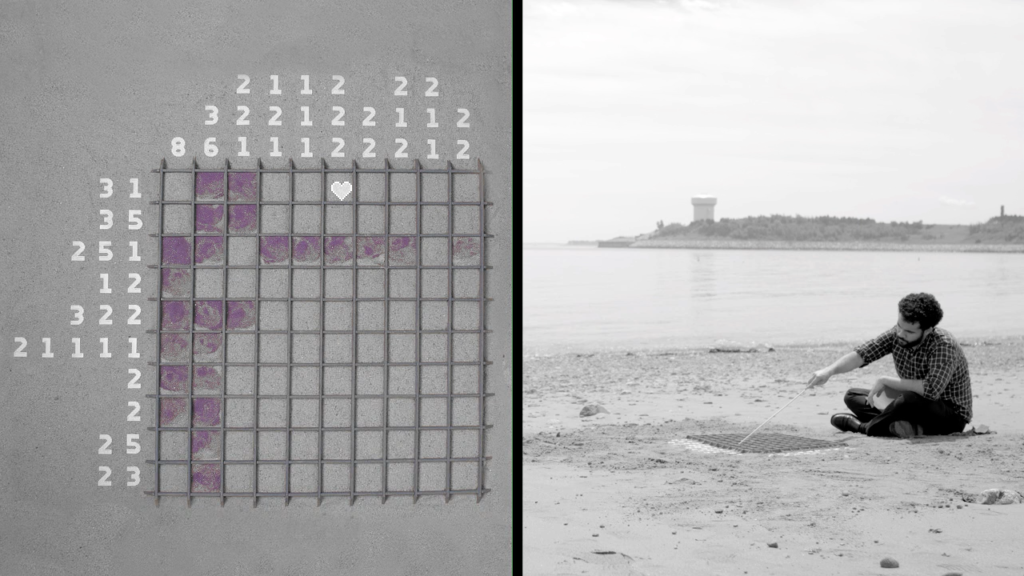
Pixel Puzzle Makeout League bills itself as a dating sim with superheroes and pixel puzzles, but even that premise fails to describe just how strange it really is. Its nonogram puzzles are numerous but not challenging, even those found in the plot-free Puzzle Maze side area. It’s not really a dating sim, but as a visual novel it achieves a minimum of interactivity, sometimes tasking me with answering questions but not caring about my answer. It asks me to invest myself in the romantic lives of characters who are not mature enough to be involved in serious relationships, and I feel Pixel Girl is not respected by her teammates or by the videogame itself. Then it culminates in an ending of mind-imploding strangeness that feels like the conclusion to a completely different story. I’d love to play a videogame where that ending feels earned, but as it is now Pixel Puzzle Makeout League is unsatisfying and uneven.